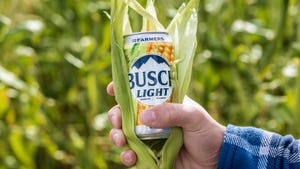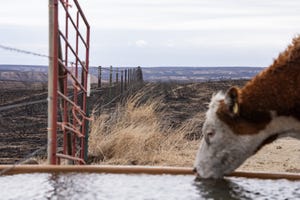Consumer demand, high prices prompt cattle producer optimism
Beef Cattle Short Course keynote speakers discuss advancements, issues, bright forecast.
August 18, 2023

Optimism greeted beef cattle producers from around the country attending the recent Texas A&M Beef Cattle Short Course for two primary reasons — high cattle prices and continued consumer demand, despite the higher beef prices.
Unlike in previous decades, Americans today eat higher-grade beef and pay a premium for it. Beef cattle producers broke out their timelines at the Texas A&M Beef Cattle Short Course to see where their industry had been, where it is today and where it might be headed.
David Anderson, Ph.D., Texas A&M AgriLife Extension Service livestock market specialist and professor in the Texas A&M College of Agriculture and Life Sciences Department of Agricultural Economics, set the mood for the first day of the Short Course with his analysis of today’s market and a forecast.
“We have a lot of reasons for optimism in the cattle market going forward,” Anderson said.
The current cattle market
Three market issues will determine where the beef industry moves in the longer term — demand, drought and speed of rebuilding, Anderson said.
“We have a product people want to buy,” he said.
The combination of high consumer demand with the current tight beef supplies added up to Anderson’s prediction that high beef prices will continue.
Moving forward, Anderson said drought and feed costs will determine the speed of rebuilding the herd, affecting how soon the prices come back down. Record corn production this year combined with fewer cattle on feed could affect feed costs. The question is: Are the current beef prices high enough to start herd rebuilding?
The answer to that question seems to be no. Right now, there is little evidence of the herd rebuilding, he said. Beef heifers held back as cow replacements are the lowest in 50 years, and that number is not expected to increase significantly in 2024.
Anderson said producers are not holding heifers back yet, but they are sending fewer cows to slaughter, indicating the selloff is slowing down, “but we have not turned the corner yet.”
He predicted the industry could expect beef production to decrease by 6% in 2024 and to see even less production in 2025, which means there will continue to be tighter and tighter production for a product consumers like.
“And we’re producing the highest USDA quality graded beef in history,” Anderson said. “We are supplying exactly what consumers want. This is really a positive picture for the overall market going forward.”
The future of the industry
Ron Gill, Ph.D., beef cattle specialist and associate department head for AgriLife Extension in the Department of Animal Science, led a panel discussion looking at the beef industry’s future. The panel included Donnell Brown, R.A. Brown Ranch, Throckmorton; Austin Brown III, Brown Ranches, Beeville; and Shalene McNeill, Ph.D., registered dietitian and executive director of nutrition science, health and wellness for the National Cattlemen’s Beef Association.
“Consumers absolutely love beef,” McNeill said. “But that does not mean you can say ‘I’m done doing all the hard work,’ because we still have challenges ahead to meet consumer expectations. There are promises we must deliver on to keep them demanding beef.”
Specifically, those promises involve advancing the taste, value, human nutrition, convenience and versatility, and, more recently, sustainability of beef to maintain consumer demand.
“It’s a great situation to be in because everyone’s meat IQ is up,” McNeill said. “During the pandemic, the consumer was cooking more. They tell us they are confident in cooking beef.”
Austin Brown said ranching is much more than just a way of life; it is a business. Today’s ranchers must be innovative and efficient; they must understand what the consumer is asking for and think outside the box to produce that higher-quality product.
While the consumer has moved from eating 3% to 10% Prime beef in the past 15 years, Donnell Brown said he predicts that number will rise to 30% by 2040. Looking forward to 40 years from now, he expects consumption to be at 75% Prime because it is a higher-quality product.
“It is easier to sell what the consumer wants to buy than what we want to raise,” he said.
However, he said, labor, marketing and taxes will continue to be issues; and water, land, weather and government will be increasingly larger issues with each decade. There will be “lifestyle” ranches owned by people driven by joy more than profitability, but the profit-dependent producer will be vertically coordinated and more profitable moving forward.
“You don’t have to change, but you will have to compete with those who do,” Donnell Brown said. “There will be a major generational shift in the cattle business in the next 10 years, and with that, the technological shift and innovation will blow our minds. I am excited about what is ahead.”
You May Also Like

.png?width=300&auto=webp&quality=80&disable=upscale)

